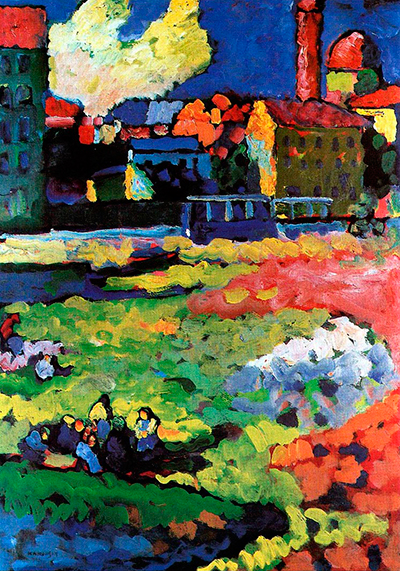Munich-Schwabing with the Church of St. Ursula is a painting by Wassily Kandinsky who is from the Russian avant-garde in 1916. This art piece is an abstract painting on an oil canvas.
The way he delivered the art piece is a testament to Kandinsky's love of precise brushstrokes and bright colour. Kandinsky created an impression on how he communicates in his paintings with this specific piece. How he applied to paint on the Munich-Schwabing with the Church of St. Ursula piece of art, shows how he has created a way of conveying emotion and mood with no need for any other skill or detail.
Now, when you look at Kandinsky's painting style, it makes one think about the European impressionists who painted before him. But Kandinsky is a different kind of artist compared to his predecessors. Kandinksy's strength is evident in how he uses the geometric patterns which you can quickly see in the structure that dominates all his art pieces. In Munich-Schwabing with the Church of St. Ursula, Kandinsky illustrates his theory of using intense colours and his appreciation of the environment. If you look at the painting, any lines that are used to create a distinction between the object is out of mass colour. The picture does not have any structure that has anything more than the application of colours to create shapes. Even when you look at people, they appear to be a mass of colour that is separated by different shades.
Kandinsky used this style to create freedom and fluidity in Munich-Schwabing with the Church of St. Ursula without any clutter or use of excess borders in the canvas. Kandinsky has lots of styles of painting, but in this specific piece, he never used lines to distinguish items on the canvas. When you look at a lot of his paintings, you will see how linear patterns have brought about the elements. In this painting, he decided not to use linear patterns. He chose to depict a lucid image of Russian life in 1916.




